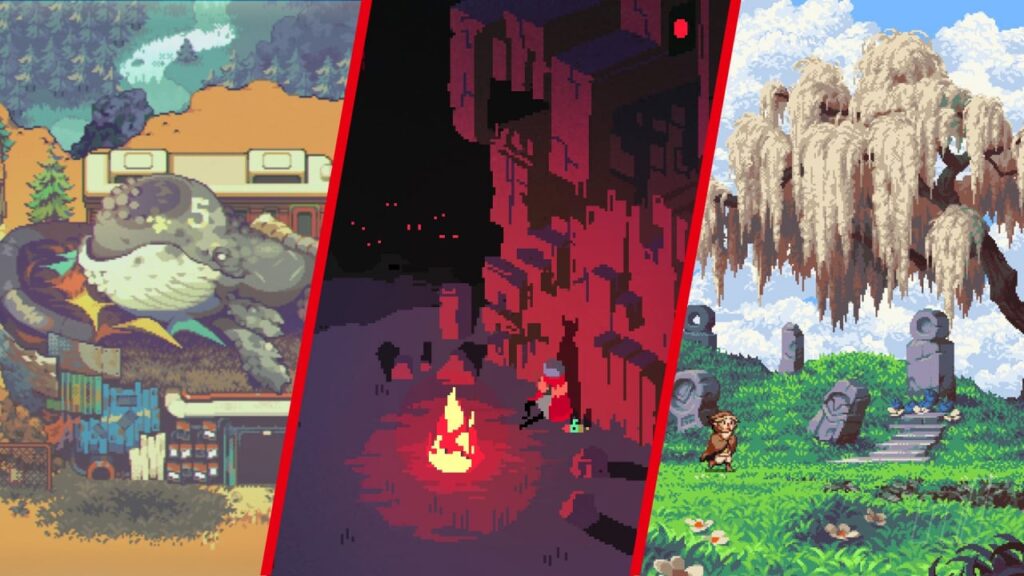Game art has evolved from early pixel art to high-poly 3D models, encompassing realism, stylized, pixel art, and cel-shading art styles. To create games, developers follow a process, including the concept, pre-production, production, and post-production phases. Concept art, character designs, and environment art are important in the pre-production stage, with the 3D modelers, texture artists, and animators working together. The post-production phase involves polishing the game and ensuring it is bug-free. Game art is essential as it brings life to the game and creates immersive worlds and engaging characters. The different game art styles used in games give developers the freedom to create different aesthetics and moods.
Introduction
Games have been an essential part of our lives, and for many of us, they are no less than a passion that drives us to the world of endless possibilities. The games have evolved significantly, from the early days of arcade machines to high-tech gaming consoles, engaging players with immersive gameplay and stunning graphics. Observe any game, and you will find a compelling art style that defines its visual appeal, atmosphere, and immersive world. The game art is an integral aspect that brings life to the game, and it goes through a tremendous process before it finally makes it to the players. In this article, we will explore the world of game art, the different art styles used in games, and how they are made.
The Evolution of Game Art
The game art has evolved significantly over the last few decades. From the early days of black and white pixels to high poly 3D models, the game art has come a long way. The evolution of game art can be broadly categorized into three phases:
1. Pixel Art
Pixel art was the first form of game art, which involved creating an image pixel by pixel. The early video games, such as Pac-Man, Space Invaders, and Donkey Kong, used pixel art to render the graphics. The pixel art was perfect for the early video games, as it was easy to create and used less memory.
2. 2D Art
As the gaming industry progressed, the game developers started to use 2D art to create games. 2D art allowed the developers to create more complex images and made the games more engaging. The 2D art was flexible and allowed the developers to create different art styles, such as cartoon, anime, and realistic.
3. 3D Art
The 3D art took the gaming industry to the next level, it allowed the developers to create realistic characters and immersive worlds. The 3D art used high poly models to create the game assets, such as characters, environments, and props. The 3D art was much more versatile than 2D art and allowed the developers to create a wide range of styles, such as photo-realistic, stylized, and cartoonish.
The Different Art Styles Used in Games
Different games use different art styles, depending on the game’s genre, narrative, and the audience. Here are some of the most popular art styles used in games:
1. Realism
The realism art style is used in games that aim to create a realistic world that mimics the real world. The game developers use motion-capture technology to capture the movements of real actors, which is then applied to the 3D models to make them move realistically. Games that use realism art style include FIFA, Call of Duty, and Grand Theft Auto.
2. Stylized
The stylized art style is used in games that aim to create a particular aesthetic or mood. The game developers use exaggerated character features, bright colors, and unique textures to achieve a stylized look. Games that use stylized art style include Overwatch, Borderlands, and Team Fortress 2.
3. Pixel Art
The pixel art style uses a limited number of pixels to create an image. It is commonly used in retro-themed games or games that aim to create a nostalgic feeling. Games that use pixel art style include Super Mario Bros, Shovel Knight, and Stardew Valley.
4. Cel-Shading
Cel-Shading is a unique art style, which is used in games that aim to create a cartoonish, anime-like look. The game developers use black outlines or contours to mimic the look of traditional 2D animation. Games that use Cel-Shading include The Legend of Zelda: Wind Waker, Jet Set Radio, and Borderlands.
How Games are Made
The game art goes through a meticulous process before it finally makes it to the game. Here’s how games are made:
1. The Concept
The game developers come up with a concept for the game, which includes its theme, narrative, and game mechanics. The concept is then finalized, and the game design document is created.
2. The Pre-Production
In the pre-production phase, the game developers create the prototype of the game, which is a bare-bones version of the game. The artists then create the concept art, character designs, and environment art.
3. The Production
In the production phase, the game developers start creating the game assets, such as characters, environments, and props. The 3D modelers, texture artists, and animators work together to creating the game assets.
4. The Post-Production
In the post-production phase, the game developers polish the game and fine-tune the gameplay, art, and sound. The game is playtested extensively to ensure that it is enjoyable and bug-free.
Conclusion
Game art is an essential aspect of any game, and it goes through a rigorous process before it finally makes it to the players. The different game art styles used in games allow the developers to create a wide range of immersive worlds and engaging characters. From pixel art to 3D modeling, the game art has evolved significantly, and it continues to push the boundaries of what’s possible in the gaming industry.
